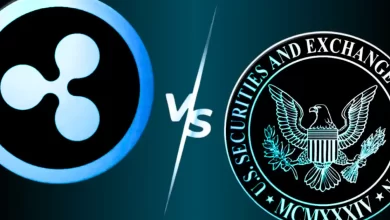Ripple’s David Schwartz Clarifies XRP Ledger’s Controversial Clawback Feature

Ripple has begun testing its new stablecoin, Ripple USD (RLUSD), on both the XRP Ledger and Ethereum mainnet, marking a strategic move to challenge established players like USDT and USDC. Simultaneously, Ripple’s Chief Technology Officer, David Schwartz, has provided clarity on the controversial clawback feature of the XRP Ledger, highlighting its importance for maintaining ledger accuracy in legally complex situations.

Ripple CTO David Schwartz Sheds Light on XRPL’s Clawback Feature, Signals New Era of Collaboration in XRP Ledger Community
Ripple’s Chief Technology Officer, David Schwartz, has provided much-needed clarity on the controversial clawback feature of the XRP Ledger (XRPL). This feature, which has been the subject of extensive debate, plays a crucial role in ensuring the integrity of digital assets on the ledger, particularly when legal obligations are in question.
The clawback feature in XRPL is designed to rectify instances where the ledger reflects incorrect information, particularly in cases involving legal obligations. Schwartz recently took to X (formerly Twitter) to explain the feature’s importance. In his tweet, Schwartz highlighted the necessity of the clawback mechanism in scenarios where the ledger’s data does not align with legal realities.
“The main reason for clawback is to fix cases where the ledger is literally incorrect. If a digital asset represents a legal obligation and the token says the legal obligation exists where the legal system says it doesn’t, the ledger is wrong,” Schwartz stated.
The clawback is not a mandatory feature but an optional setting that issuers can activate before distributing stablecoins. This setting is particularly important for regulatory compliance, allowing issuers to recover or “claw back” tokens that have been distributed to accounts involved in illegal activities. For instance, if tokens are found to have been sent to a sanctioned account, the issuer can use the clawback feature to retrieve the funds, thereby ensuring that the ledger remains accurate and compliant with legal standards.
A New Chapter of Collaboration within the XRP Ledger Community
The discussion surrounding the clawback feature comes at a time when the XRP Ledger community is experiencing a significant shift towards greater collaboration and inclusivity. RippleX, an initiative within Ripple focused on fostering the growth of the XRP Ledger, recently announced ongoing discussions about transforming the XRPL Foundation into a more robust entity that better serves the community’s needs.
This initiative has brought together key players within the XRP ecosystem, including XRPL Labs, XRPL Commons, the current XRPL Foundation, Ripple, and other prominent members of the community. These discussions are centered around developing a more effective, inclusive, and visible foundation that can drive the long-term security, growth, and decentralized contributions to the XRP Ledger.
One of the most notable outcomes of these discussions is the decision to transfer the essential assets of the existing XRPL Foundation to the newly proposed independent foundation. This move is seen as a critical step towards establishing a governance structure that truly represents the entire XRP Ledger community, ensuring that all voices within the ecosystem are heard and that the ledger’s development remains aligned with the community’s best interests.
The insights shared by Schwartz regarding the clawback feature, coupled with the ongoing efforts to evolve the XRPL Foundation, signal a new era for the XRP Ledger.
As the XRP Ledger continues to grow and adapt to the changing landscape of digital finance, the emphasis on collaboration and community-driven governance will likely play a pivotal role in its success. The establishment of a new, independent foundation dedicated to the XRP Ledger signals the community’s forward-thinking approach and its determination to build a decentralized future for digital assets.

Ripple Begins Testing Its Stablecoin Ripple USD (RLUSD) on XRP Ledger and Ethereum Mainnet
In related news, Ripple has announced the private beta testing of its much-anticipated stablecoin, Ripple USD (RLUSD), on both the XRP Ledger and Ethereum mainnet. This move marks a strategic step in Ripple’s ongoing efforts to expand its influence in the stablecoin market, challenging established players like USDT and USDC.
Ripple’s announcement, made via a post on X, revealed that RLUSD is currently in private beta on the XRP Ledger and Ethereum mainnet. “We’re excited to share that Ripple USD (RLUSD) is now in private beta on XRP Ledger and Ethereum mainnet,” Ripple wrote. However, the company also issued a cautionary note, stating that RLUSD has not yet received regulatory approval and is not available for purchase or trading. Ripple urged its followers to remain vigilant against potential scams, emphasizing that no legitimate distribution of RLUSD has taken place.
The introduction of RLUSD comes as part of Ripple’s broader strategy to enhance its ecosystem and provide a stablecoin option that complements its native cryptocurrency, XRP. On June 25, Ripple President Monica Long highlighted the synergies between RLUSD and XRP, noting that the stablecoin would complement the functionalities of XRP on the XRP Ledger.
The news of RLUSD’s testing phase has generated considerable interest within the cryptocurrency community, particularly among those who follow Ripple and its developments closely.
Ripple’s decision to launch RLUSD on both the XRP Ledger and Ethereum mainnet is a strategic move that aims to leverage the strengths of both blockchain networks. The XRP Ledger is known for its fast transaction speeds and low fees, making it an ideal platform for a stablecoin designed for cross-border payments. Meanwhile, Ethereum’s extensive network and compatibility with decentralized finance (DeFi) applications provide RLUSD with a broad range of use cases beyond Ripple’s traditional payment solutions.
Competing with USDT and USDC
Ripple’s entry into the stablecoin market positions RLUSD as a potential rival to the two largest stablecoins by market capitalization: USDT and USDC. Tether’s USDT currently dominates the stablecoin market with a supply of $121.62 billion, accounting for 70.6% of the total stablecoin supply. Circle’s USDC follows with a supply of $36.38 billion, representing 21% of the market.
Ripple’s ambition to challenge these established stablecoins is evident in its strategic approach to RLUSD’s development. By testing RLUSD on both the XRP Ledger and Ethereum mainnet, Ripple is positioning its stablecoin to capture a share of the rapidly growing stablecoin market. However, RLUSD’s success will depend on several factors, including regulatory approval, market adoption, and its ability to compete with the liquidity and stability that USDT and USDC currently offer.
While RLUSD is still in its early testing phase, the stablecoin’s potential impact on the cryptocurrency market cannot be understated. If Ripple secures regulatory approval and successfully launches RLUSD, the stablecoin could become a key player in the cross-border payments industry, leveraging Ripple’s existing infrastructure and partnerships.
Moreover, RLUSD’s presence on both the XRP Ledger and Ethereum mainnet opens up opportunities for integration with various DeFi protocols, potentially driving further adoption of the stablecoin. As Ripple continues to navigate the regulatory landscape and refine RLUSD’s features, the cryptocurrency community will be watching closely to see how this new stablecoin evolves.





